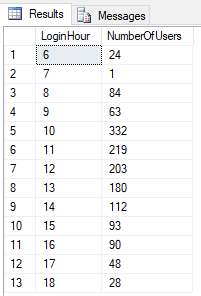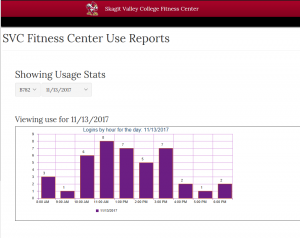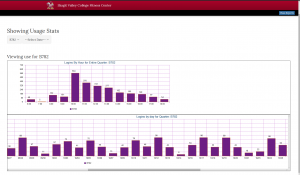There are ways to “audit” passwords.
http://www.techrepublic.com/article/audit-passwords-with-a-password-cracking-tool/
Here is a tool to retrieve passwords from chrome
http://securityxploded.com/chrome-password-dump.php
There are ways to “audit” passwords.
http://www.techrepublic.com/article/audit-passwords-with-a-password-cracking-tool/
Here is a tool to retrieve passwords from chrome
http://securityxploded.com/chrome-password-dump.php
Azure offers encoding and live or on-demand streaming in the cloud.
https://azure.microsoft.com/en-us/services/media-services/encoding
From your original figure, just reverse the polarity of the ordered pairs.
Point A(x,y) will be Point a(-x, -y)
(-6,3) (-3,3) (-2,5) (-2,1) (-6,1) original
(6,-3) (3,-3) (2,-5) (2,-1) (6,-1) rotated 180 degrees around origin.
From the original, reverse the polarity of the x value. Point A(x,y) will become point a(-x,y)
(-6,3) (-3,3) (-2,5) (-2,1) (-6,1) original
(6,3) (3,3) (2,5) (2,1) (6,1) reflected over y axis
The new position of point M (h, k) will become M’ (k, -h)

https://www.desmos.com/calculator
Super sweet graph. Also an app for phone as well.
In the web config configuration section, you can add app settings
<appSettings>
<add key="MyVariable" value="MyValue" />
</appSettings>
You can access these variables using this code:
string MyVariable= ConfigurationManager.AppSettings["MyVariable"];
Here is a handy SQL snippet to select records by the half hour in a certain date range.
SELECT DATEADD(mi, DATEDIFF(mi,0,[LoginTime])/30*30,0) as LoginHour, Count(*) as NumberOfUsers FROM[my_db].[dbo].[MyTable] WHERE [LoginTime] BETWEEN '{0} 00:00:00.00' AND '{0} 23:59:59.999' GROUP BY DATEADD(mi, DATEDIFF(mi,0,[LoginTime])/30*30,0) ORDER BY DATEADD(mi, DATEDIFF(mi,0,[LoginTime])/30*30,0)
The result set will look something like this:

Here is a code to select by the hour if you don’t need to go down to the half hour
SELECT datepart(HH, [LoginTime]) as LoginHour, Count(*) as NumberOfUsers FROM[my_db].[dbo].[MyTable] WHERE[LoginTime] BETWEEN '09/07/2017 00:00:00.00' AND dateadd(dd, 1, '10/20/2017 23:59:59.999') GROUP BY datepart(HH, [LoginTime]) ORDER BY datepart(HH, [LoginTime])
And the result set will resemble this:

Here is a snipped to get a all records regardless of the date, and count by the half hour.
SELECT substring(CONVERT(VARCHAR, DATEADD(mi, DATEDIFF(mi,0,[LoginTime])/30*30,0), 108),0,6) as LoginHour, Count(*) as NumberOfUsers FROM[my_db].[dbo].[MyTable] GROUP BY substring(CONVERT(VARCHAR, DATEADD(mi, DATEDIFF(mi,0,[LoginTime])/30*30,0), 108),0,6) ORDER BY substring(CONVERT(VARCHAR, DATEADD(mi, DATEDIFF(mi,0,[LoginTime])/30*30,0), 108),0,6)


I was tasked to visualize the data from years of students using the Fitness Center. I worked with C# and SQL server to make make charts from the data. I used Visual Studio to create a WebForms Application and deployed to IIS server. I was able to leverage active directory to provide integrated authentication to this resource.


Here is a handy snippet for those rare occasions when you bother to error check.
If Err.Number <> 0 Then subject = "Error creating early alert" email_message = "There was the following error while creating an early alert record: " & Err.Number & " : " & Err.Description sendEmail adminEmail, email_message, from_email, subject End If
Can deliver a helpful error message such as:
There was the following error while creating a record: -2147217900 : Unclosed quotation mark after the character string ‘Failed a quiz/test’.
You have a dropdown list, populated via sql data source, and you want it to have “Select a value” as the first selected option.
protected void DropDownList2_DataBound(object sender, EventArgs e)
{
DropDownList list = sender as DropDownList;
if(list != null)
{
list.Items.Insert(0, "--Select Date--");
}
}
int numberOfListItems = CheckBoxList1.Items.Cast<ListItem>().Count(li => li.Selected);